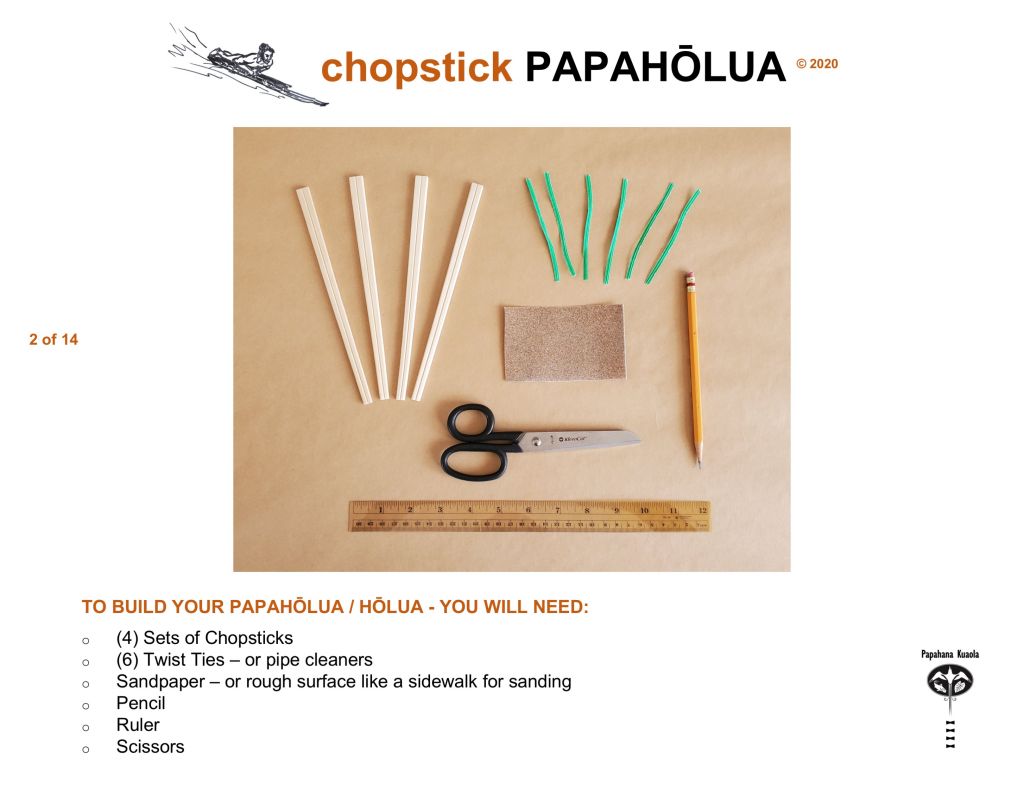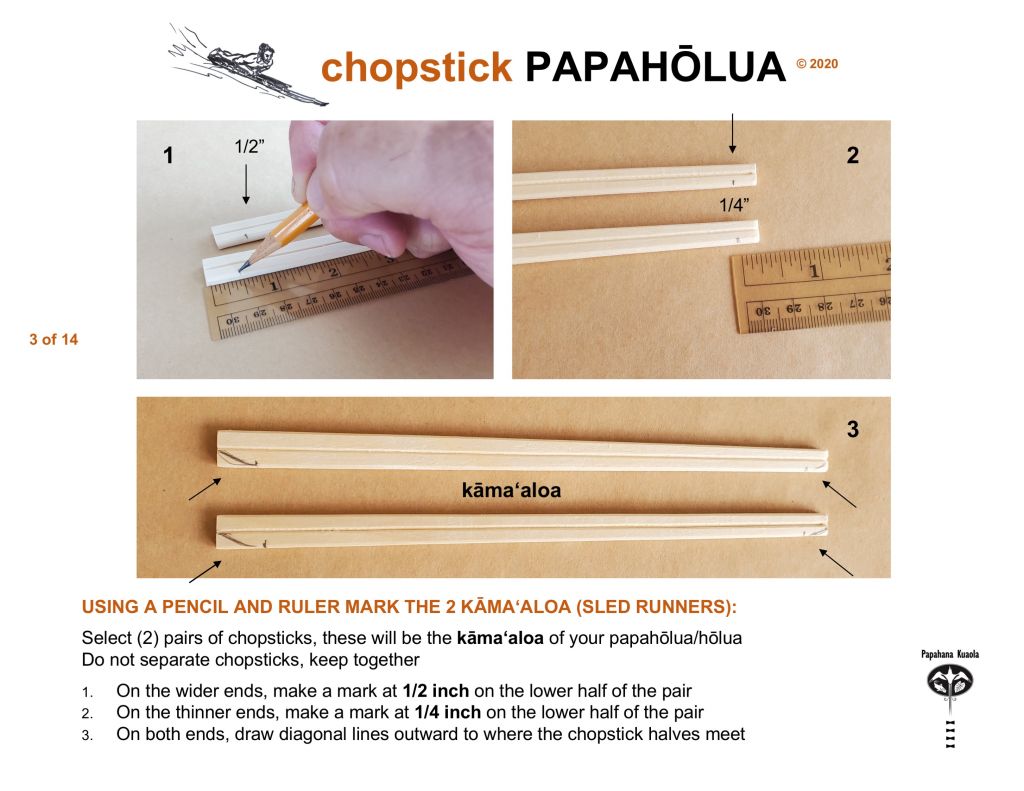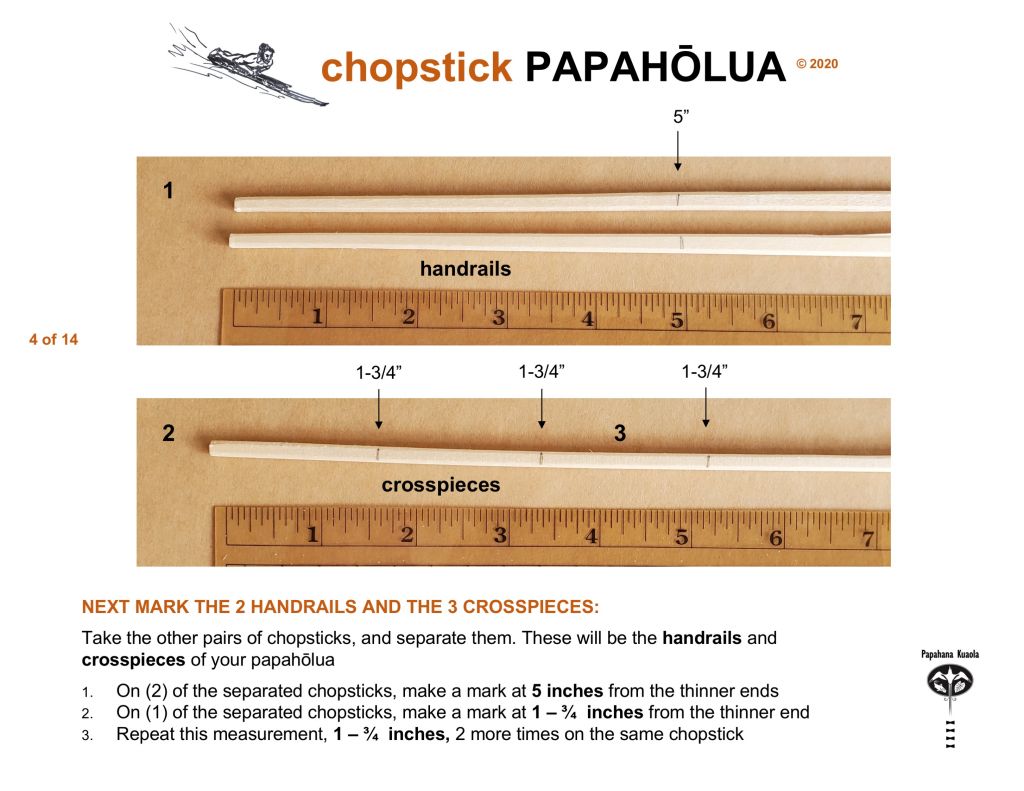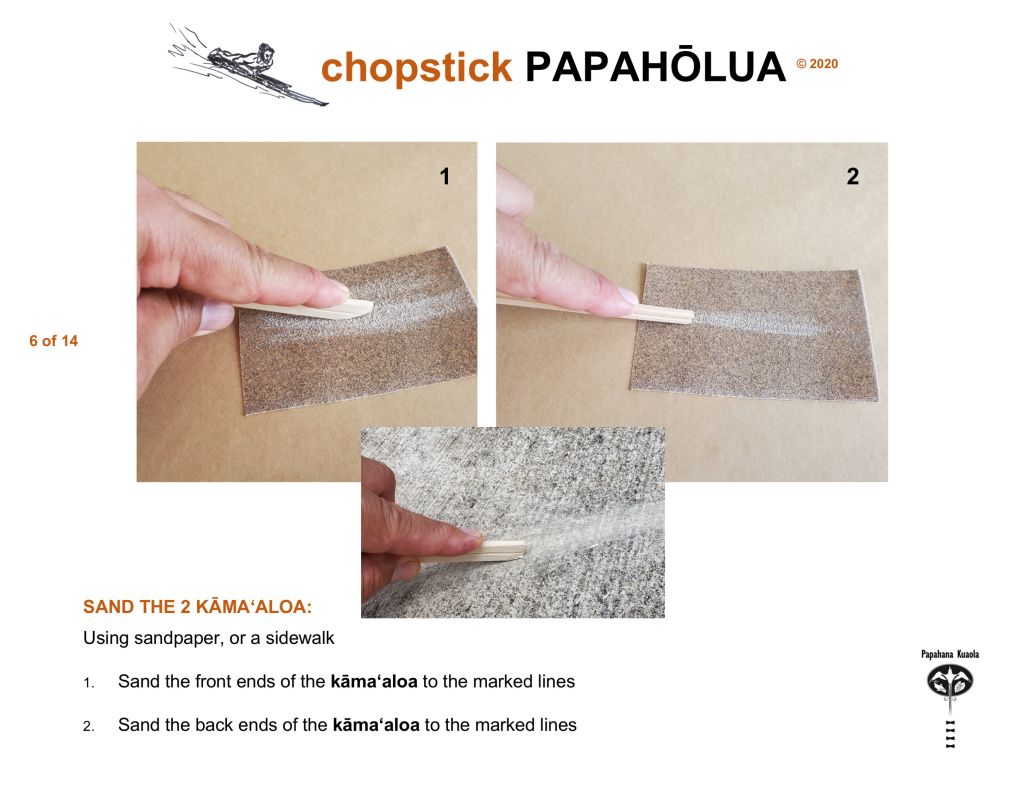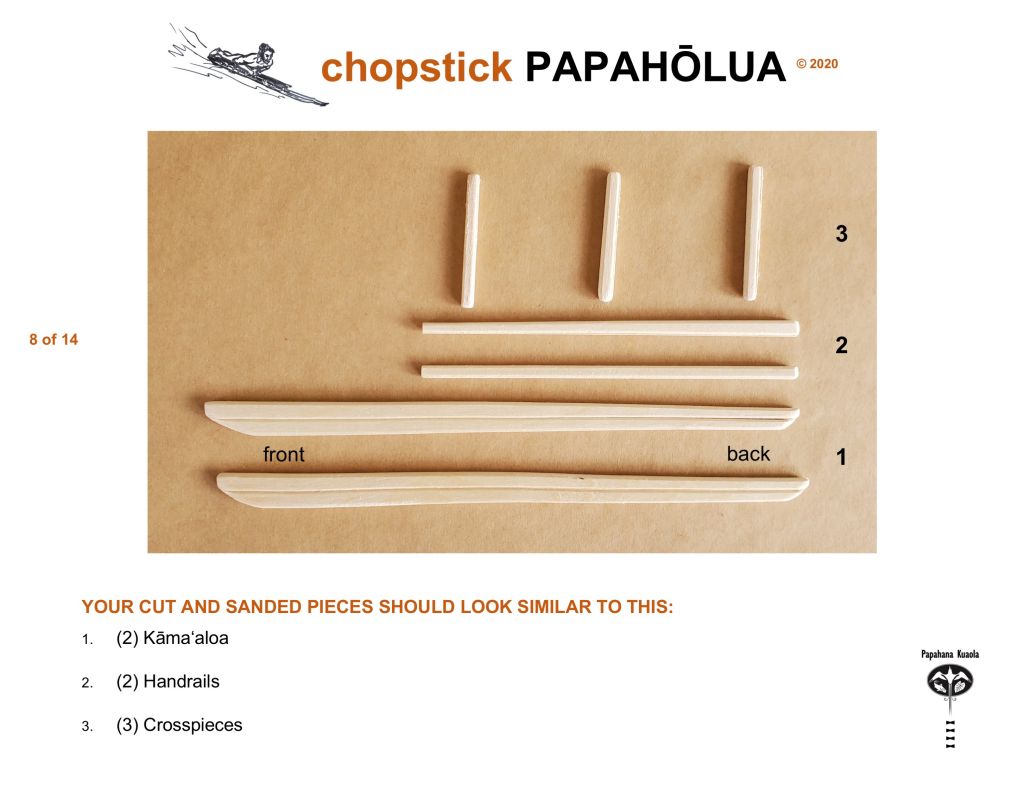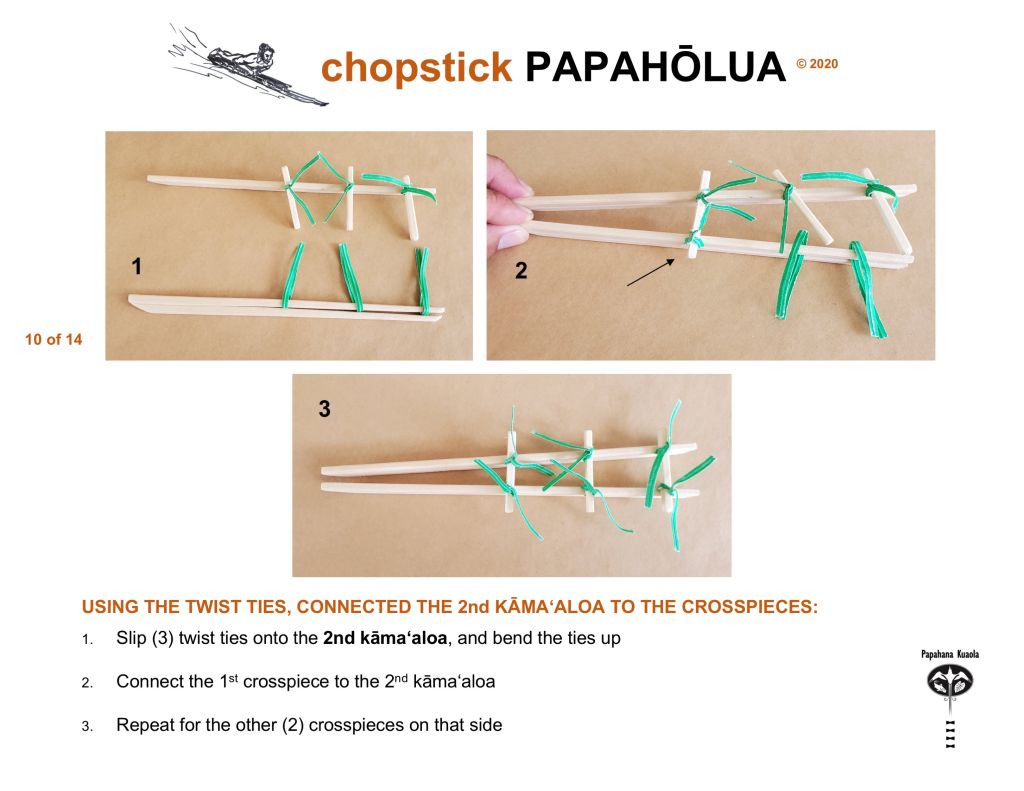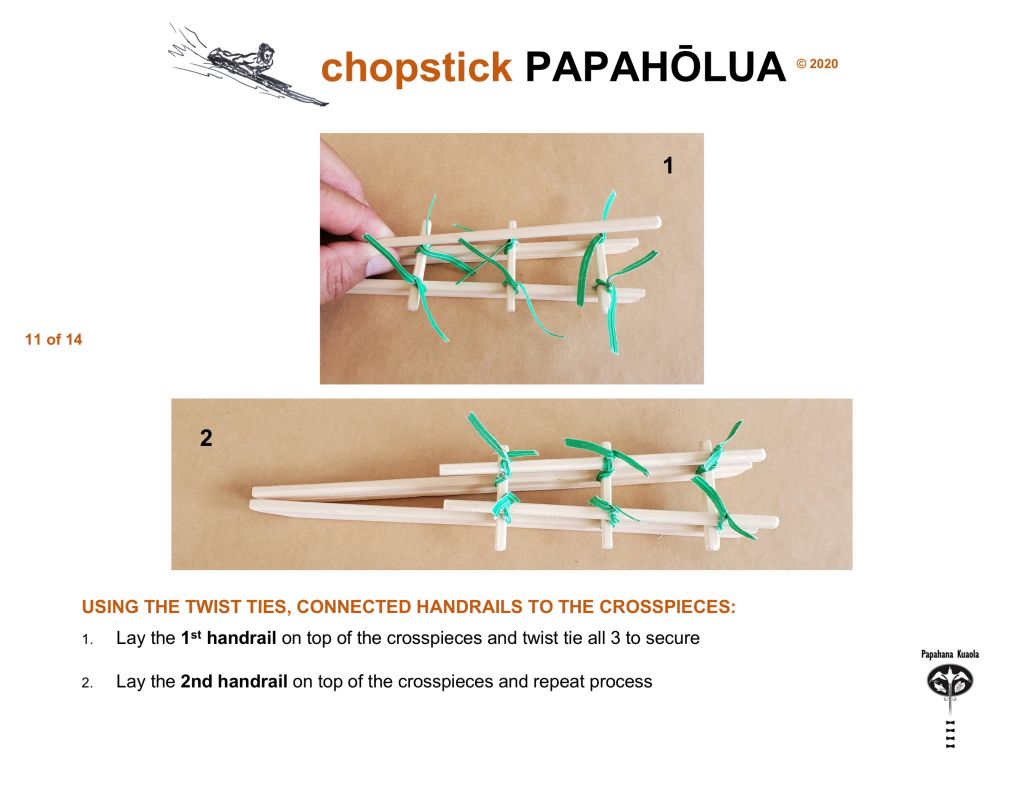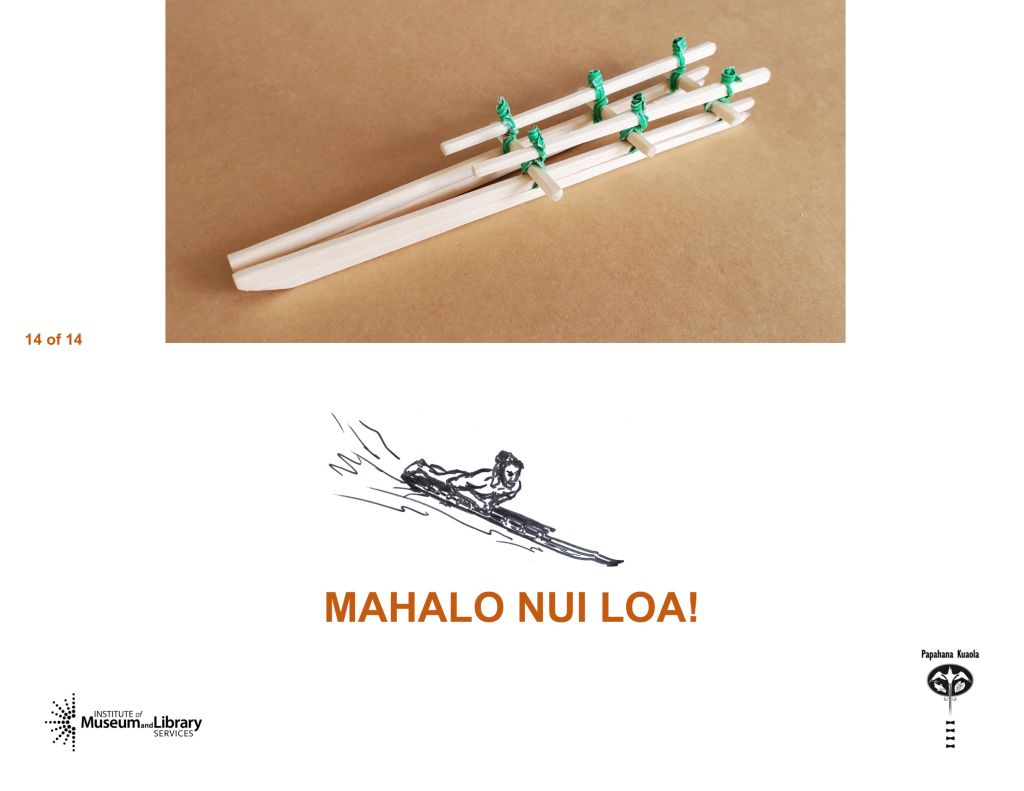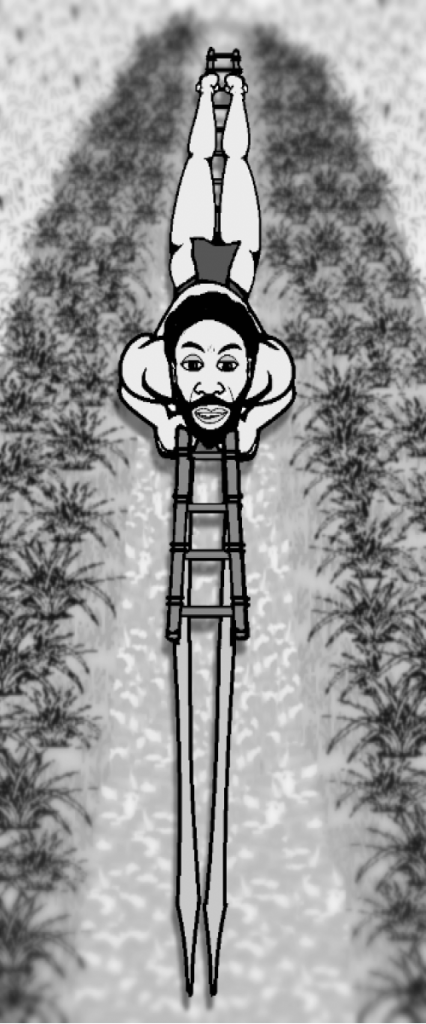The Hawaiian Art and Science of Hōlua
This workshop supports the perpetuation, preservation, and practice of heʻe hōlua by providing opportunities for the Hawaiian community to learn from cultural practitioner Tom “Pōhakū” Stone through a culture-based community workshop that will inspire and enable the community to engage in cultural traditions and practices. Participants will learn about the ancient art of hōlua sled making, learn how hōlua were built and where this sport was practiced. Hands-on experiences will include lashing a sled and riding down a slight slope. This workshop is funded by the Institute of Museum and Library Services, Native Hawaiian Library Services program.
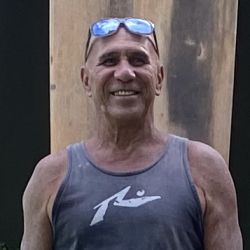
Cultural Practitioner, Tom “Pōhaku” Stone
Tom “Pōhaku” Stone, a legendary native Hawaiian surfer and waterman, has been on a life long journey in search of his cultural heritage. He is credited with single handedly revitalizing the sport of he’e holua (Hawaiian sledding), a centuries old extreme sport, and for the past several years he has been sharing his knowledge and his aloha as a teacher and craftsman, instructing students in the arts of sled building and ancient surfboard carving. Through this balance of riding, teaching, and craftsmanship, Pohaku has found peace within himself and a sense of pride in his culture that can never be broken. It is this peace and pride that is put into every papa holua and papa he’e nalu he crafts, making these works of art truly “He mea Kanaka Maoli – Native Made.” www.hawaii.bc.com
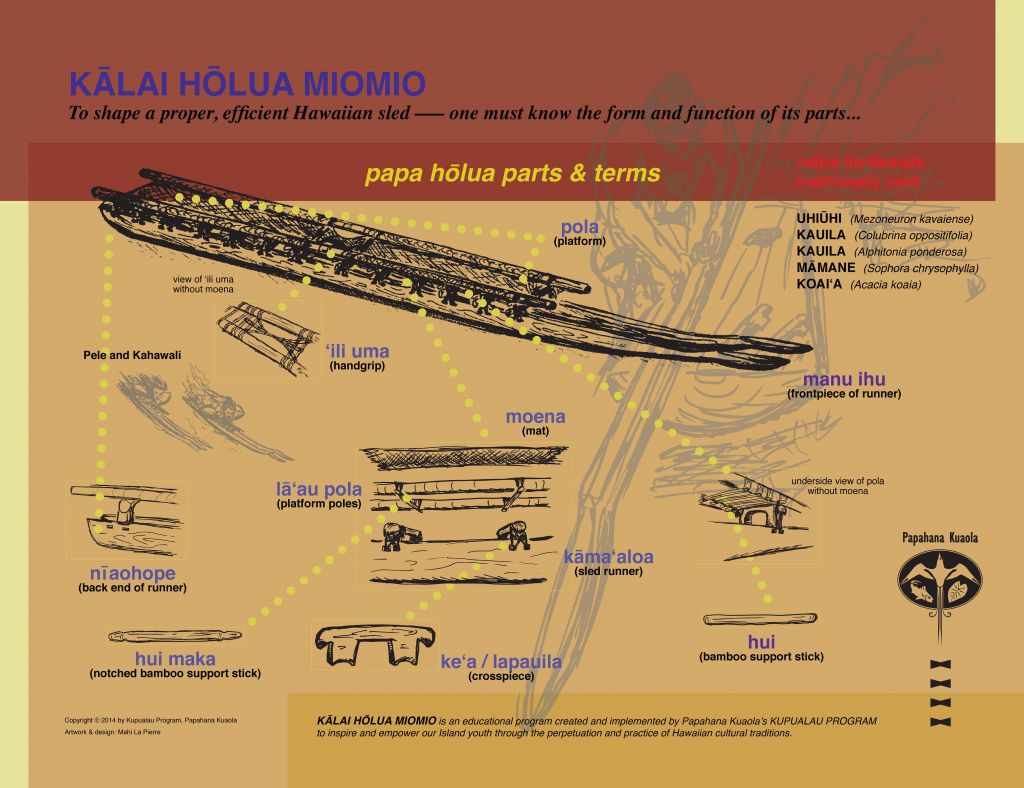
Kālai Hōlua Miomio Poster
The terms used for the papa hōlua parts on this poster were borrowed from waʻa and hale traditions, or words chosen to express their function or location. In our research, only one term used here, kāmaʻaloa, was directly connected to hōlua and found in three Hawaiian-English dictionaries by the following: 1) Pukui & Elbert, 2) Parker, and 3) Andrews.
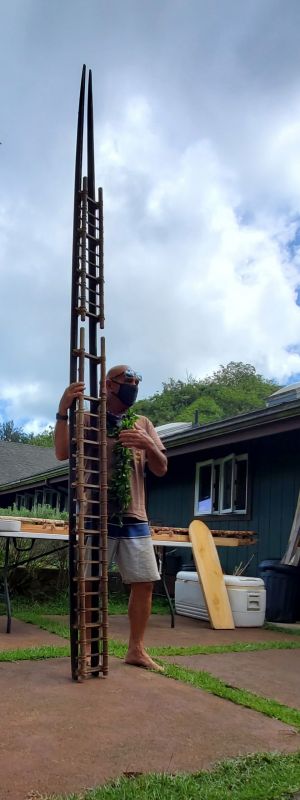
Participants learned about the ancient art of hōlua sled making, how hōlua were built and where this sport was practiced. Cultural practitioner, Tom “Pōhaku” Stone, provided history, cultural significance, and hands-on guidance in the art of heʻe hōlua (sled riding).
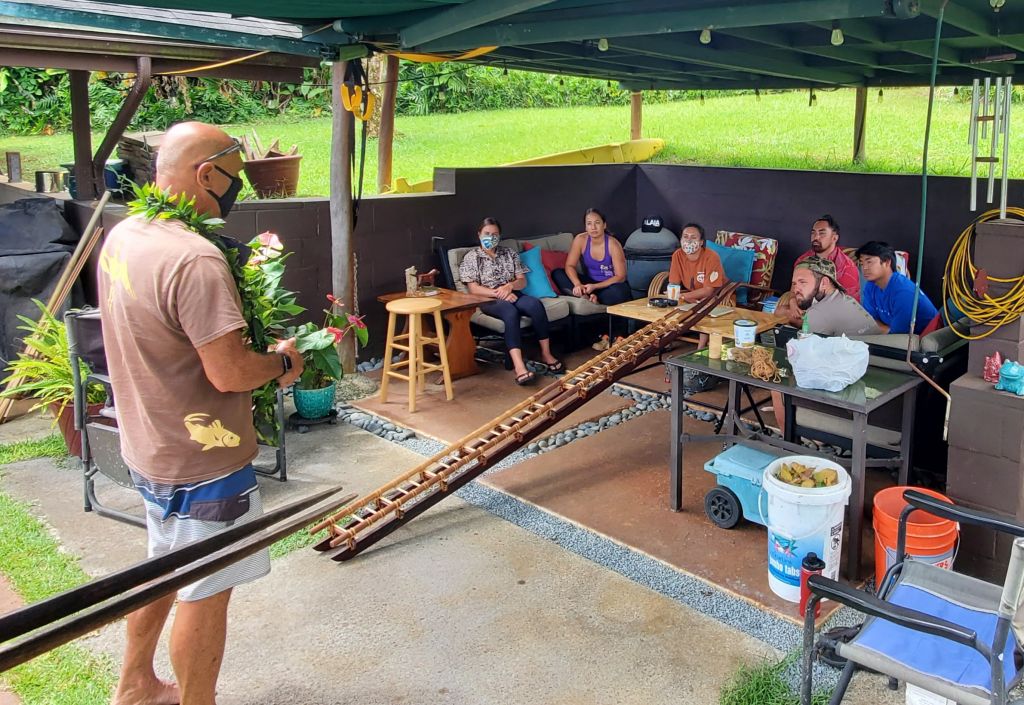
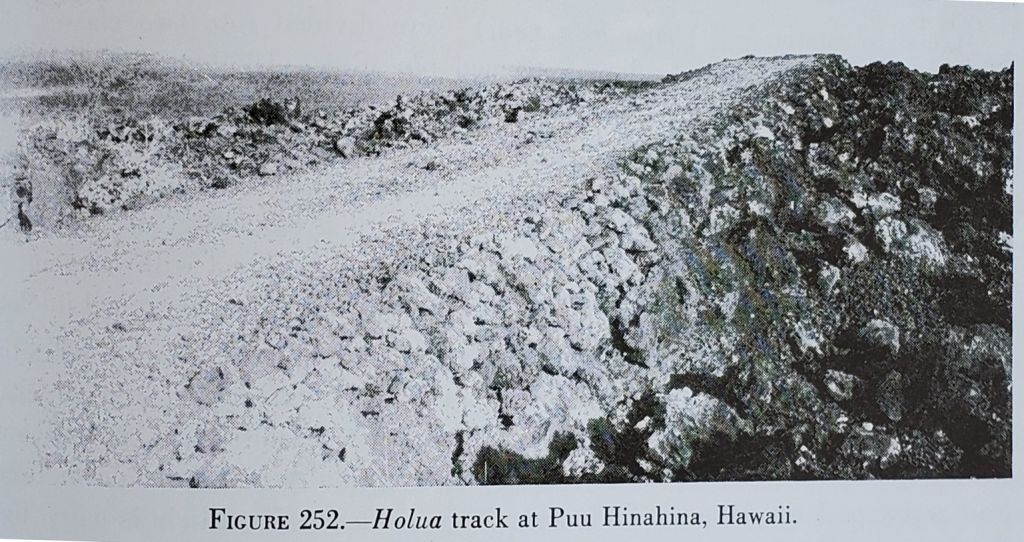
Pōhaku uses only natural handcrafted cordage to lash the papa hōlua. The lashing of a hōlua was an integral part of this process. Various styles of lashing were used to carefully bind individual parts of the papa hōlua (sled) much like the lashing of waʻa (canoe) or hale (house). In the time of our kūpuna (ancestors) the ʻaha or cordage used was made of niu (coconut) or ʻolonā (shrub related to mamaki). The kāmaʻaloa, or runners, were made of uhiūhi, māmane, kauila, and koaiʻa. Crosspieces connect the two kāmaʻaloa. The handrails are connected by strips of ʻohe (bamboo) and then lashed to the crosspieces.
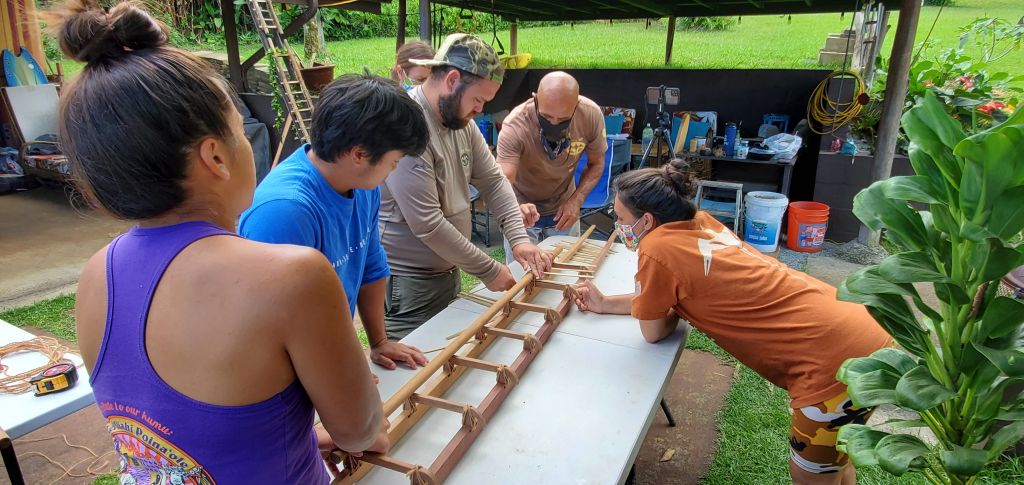
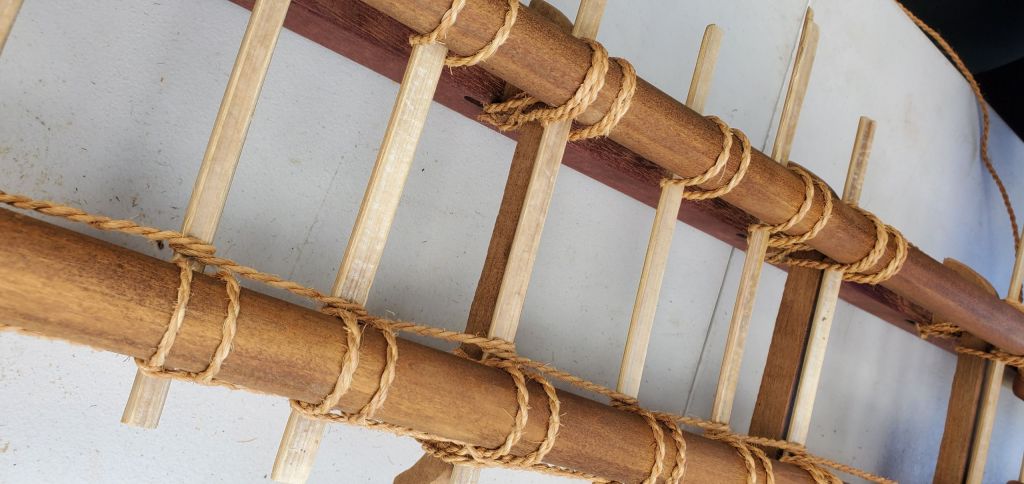
Pua ke kō, neʻe i ka heʻe hōlua.
When the sugarcane tassels [blooms], move to the sledding course.
The tops of sugarcane were used as a slippery bedding for the sled to slide on.
(ʻŌlelo Noʻeau #2703)
Traditionally, the pua kō (sugarcane flower) was placed on the kahua hōlua (sledding course) and the heat of the sun brought out the oils from the kō to provide for less friction and a fast-moving ride. Participants had the opportunity to experience the feeling of being on a hōlua. The sleek construction of ancient craftsmanship lent itself to a swift and exhilarating adventure. During this workshop they used kukui oil to lubricate the runners to provide for a smooth and fast ride. Whether lying down or in an upright position, the intensity of this traditional practice was felt.
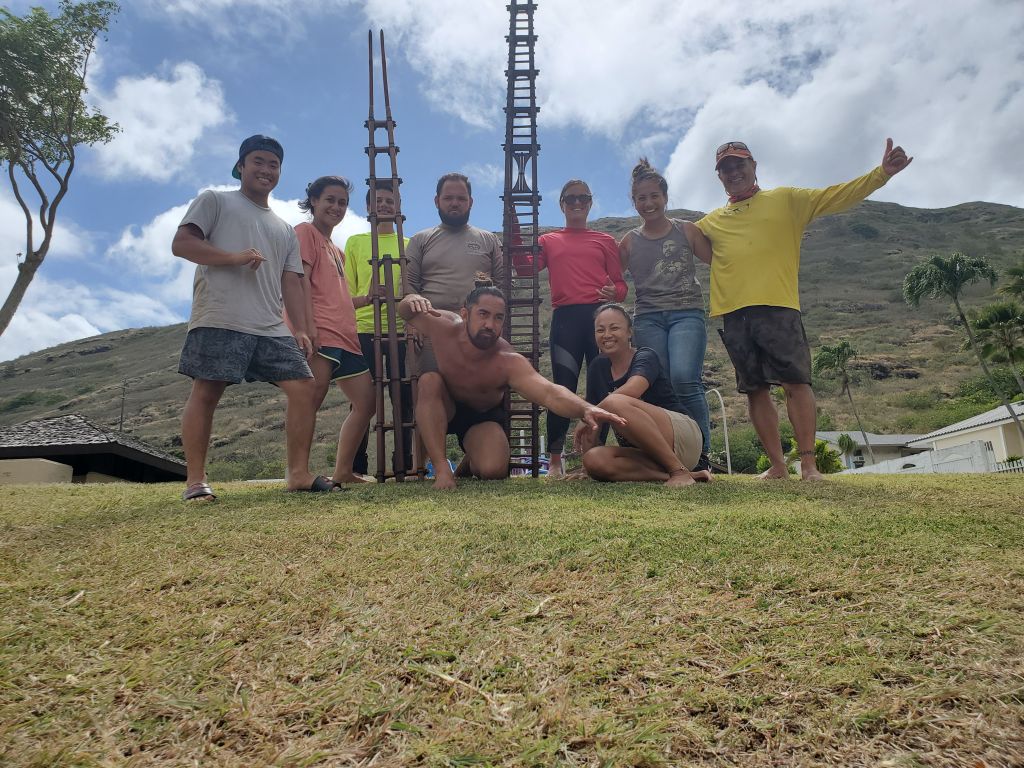
The art of crafting papa hōlua and the practice of riding hōlua is a dying art form. Through cultural practitioners like Pōhaku Stone, Kumulaʻau Sing, ʻIliahi Doo, Kunāne Wooton, and Mahi La Pierre, this art form is being revived and resurrected. Papa hōlua can be found in the Bishop Museum and serve as traditional resources for modern day practice. Through workshops like this, the knowledge of our kūpuna is being practiced and preserved for future generations.
A Favorite Sport of Akua and Aliʻi![]()
Imagine yourself in early Hawaiʻi enjoying games and sports with friends and family. Hei (crafting string figures) and palaʻie (a loop and ball game) require skill as do water sports such as board and bodysurfing. But none quite match the unique sport of hōlua.
As a youngster, you might take part in the sport of hōlua kī, sliding down grassy hillsides on a bunch of ti leaves. Then you could join your friends and slide together on a batch of coconut fronds. Joy and laughter would keep you company as you imitate experts and perhaps practice for a more dangerous version of these sliding games reserved for aliʻi.
First, locate a sled course on a steep hill. Its surface is smooth because rocks and soil are packed into uneven areas. For a faster run, pili grass placed on top is greased with kukui nut oil.
Next, you need a sled – no more than 6 inches wide and stretching 12 feet or more in length. This would be your papa hōlua. Two wooden runners support the mat-covered surface. A typical rider would lay or squat on it. Standing was only for the bravest experts, as these sleds could reach break-neck speeds on slick, steep surfaces.
On side-by-side courses that ended on a level plane or even in the ocean, competitions sometimes had females challenging males. Pele is said to have her own version of heʻe hōlua, racing downhill on speeding flows of red hot lava! Kama-puaʻa, the pig kupua, was a fierce opponent himself.
For centuries, this sport of slippery downhill racing played an exciting role in the lives of aliʻi. One famous course was located in the moku of Kona on Oʻahu. Here, thrill-seekers whipped down the steep exterior southern wall of the rejuvenation tuff cone of Pū-o-waina.
Imagine your eagerness as you participate in this daring, skillful sport. Would you ride your sled standing? If so, the world would whiz by making you dizzy. Memories of this heart-pounding experience would last you a lifetime!



